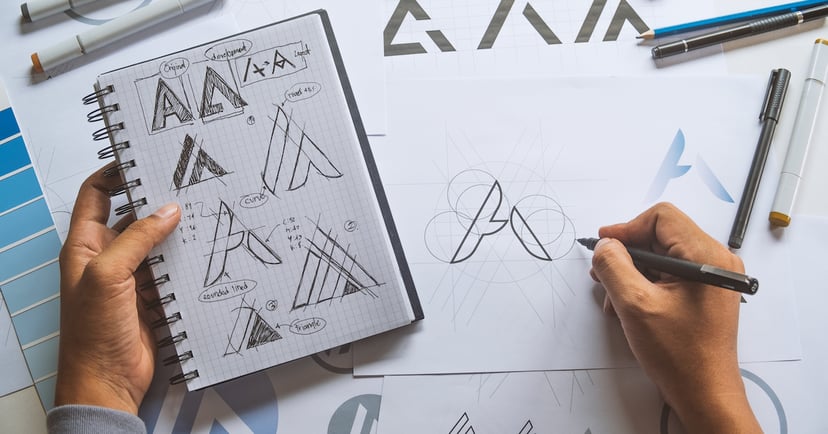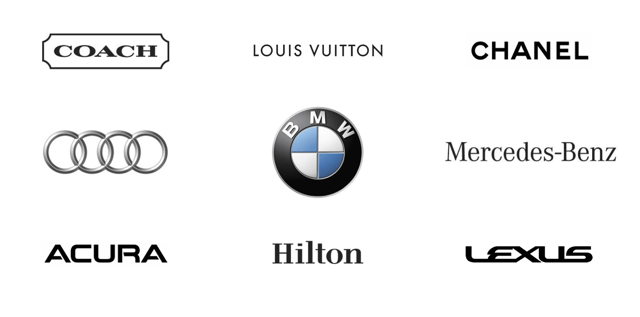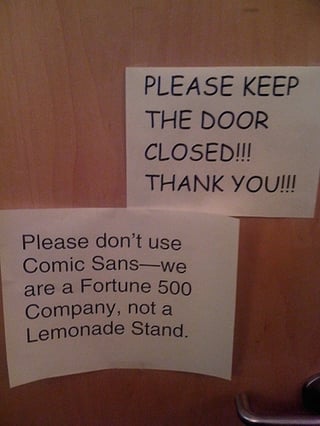The Importance of Design in Marketing for Businesses
Written by

We often extol the virtues of content marketing, but not all business leaders understand the importance of design in marketing. If you were to look at their top priorities for 2020, I’m sure you’d see plenty of variations of “maximize ROI” or “increase revenue,” but little about the role design plays in getting there.
Businesses are often so focused on results from their marketing efforts that many graphic design elements are often overlooked in the haste to get quick wins and better ROI. There’s supposed to be a 360° flywheel approach to inbound marketing, sales, and service — and design is a big part of delivering a consistent brand experience.
The Importance of Design in Marketing
Not only does good design help attract attention to your marketing materials and activities, it can also enhance the quality of your message. In short, bad design makes for bad marketing. For more specific instances of how design influences your marketing, look no further than the examples below.
Establish Brand Identity, Look, and Feel
When you think of the world’s most well known brands, you can instantly picture their logos, unique color schemes, and even fonts. This isn’t something these strong brands luckily stumbled upon; a lot goes into developing the ideal logo, finding the perfect color scheme, and making the right font choices with graphic design.
Psychological studies have been conducted to see how people perceive different colors, and marketers use those principles in their branding to help convey quality or a different message. Certain colors can create excitement or sadness, increase appetite, or even create a feeling of warmth or coolness. If you want to convey your product or service is high-end, for example, brands will often use colors like black, gold, or silver.

In addition to the color scheme, a lot of work goes into developing the perfect font for your design. Selecting the proper typefaces, size, and style is crucial for developing your brand identity, and everything about the font is closely considered from a designer standpoint, like weight, kerning, leading, point size, feeling/style, etc. The fonts you use are a reflection of your company, much like the clothes you wear to an important sales meeting. Some fonts are more comparable to suits, while others are more comparable to pajamas.

Raise the Visibility of Your Campaigns
With so many companies competing for attention online, having exceptional design is one of the best ways to differentiate yourself from the crowd. Likewise, if your design stinks altogether, you really have no chance of being noticed (or taken seriously).
As humans, it’s in our nature to habituate our environments and become familiar with things that don’t stand out. If people noticed every detail of every little thing, there’d be information overload. For designers, it’s important to visualize your marketing the way your target persona sees it, so you can better determine what would help it stand out, and stay away from designs that make it unappealing to them.

Getting your target persona’s attention is just one part of the equation, however. Once you have your persona’s attention, you need to keep their attention, and good design helps you do that.
Have you ever seen a targeted ad on Facebook or other social media ads and clicked on them? If the art direction looks good and the topic is relevant to me, it will catch my attention, and I’m much more likely to click. When the photo, design, or topic is irrelevant or features an uninteresting picture, however, I’ll probably keep scrolling.
Drive Conversion and Ultimately ROI
Great design can do a lot to improve your marketing efforts, and it does more than just help your content stand out and look good. Using the right design can help influence more conversions and, ultimately, attract potential customers and improve your ROI. It’s been proven that photos of people can help increase empathy, for example, as researchers have found that people feel a deeper connection to images with other people than those without.
Photos of women, babies, and attractive people have also been proven to increase visual response rates (sorry regular people), and photos of objects can also help increase trust (e.g., detailed product images). When combined with conversion opportunities, relevant, well-placed photos can help increase conversions on your offers, and eventually more customers.
4 Insider Tips for Better Design
Before you jump into new design goals for your company, there are some things you should know that can help you get the most from your investment. From our own experience, here are four design tips that can help you achieve better results.
1. Good Design Takes Time
If there’s one thing you take away from the notes above, it’s that good design decisions aren’t just made by chance; they’re made after hours of intensive research and careful planning by your design team.
There’s a lot more to the design process than just making a logo and trying different variations until you have one you like. Good designers familiarize themselves with the brand by studying customer and prospect interviews, SEO strategy, and content.
2. With Design, You Get What You Pay For
If you’re looking to give your website or brand a complete makeover, investing in a good designer is always worth the extra cost. An experienced designer will help eliminate a lot of the guesswork involved and will dig right into your brand and personas to develop the best options.
Whether you invest in training or hiring a designer internally, or hire a freelance designer or agency, there are plenty of ways to engage a properly trained designer that will actually help you achieve the results you’re looking for. Design isn’t just something anyone can do, just like accounting isn’t something everyone can do, even if they have the proper software programs for it. That being said, there are plenty of tools that can help expedite the web design process and make it scalable, like HubSpot's Theme Marketplace and WYSIWYG editor.
3. It’s Not Always About Looks
Yes, a lot of design choices are based on their aesthetics. However, as Steve Jobs said, “...design is not just what it looks like and feels like. Design is how it works.” When designing a website, for example, the first — and most important — thing you design for is user experience. Looks are secondary. There are plenty of examples of websites that look incredible, but are confusing to navigate.
A good designer makes the design work around the content of the website and helps that content stand out — which helps your personas move smoothly through your site on their search for information.
4. Focus on Your Target Audience
Speaking of personas, your target audience should be your primary design inspiration. When they visit your site, you want to think about how it looks and feels in terms of style, and how they might navigate and interact with your site from different landing points (blog, homepage, landing pages, etc.). You want to use imagery, color, and fonts that are appealing to them and support your brand’s message.
As any inbound marketer knows, your company’s website is the core of your inbound marketing efforts. Use our checklist, 10 Key Elements of an Inbound Website, to jumpstart some design improvements and improve your use experience. But please contact us if you have any questions about how Weidert Group can help with your design needs.
Subscribe To Our Blog
Information. Insights. Ideas. Get notified every time a new Weidert Group blog article is published – subscribe now!
You May Also Like...

Artificial Intelligence
Revenue-Driving B2B Content Marketing Strategy with Andy Crestodina

Artificial Intelligence
AI Agents Are Here—How Smart Businesses Are Using Them Now

Inbound Marketing
Podcasting Playbook: What We Learned After 100 Days of Running a B2B Podcast
Accelerate Your Growth with
Weidert Group
If you’re ready to explore a partnership, request a personalized consultation with our team.

